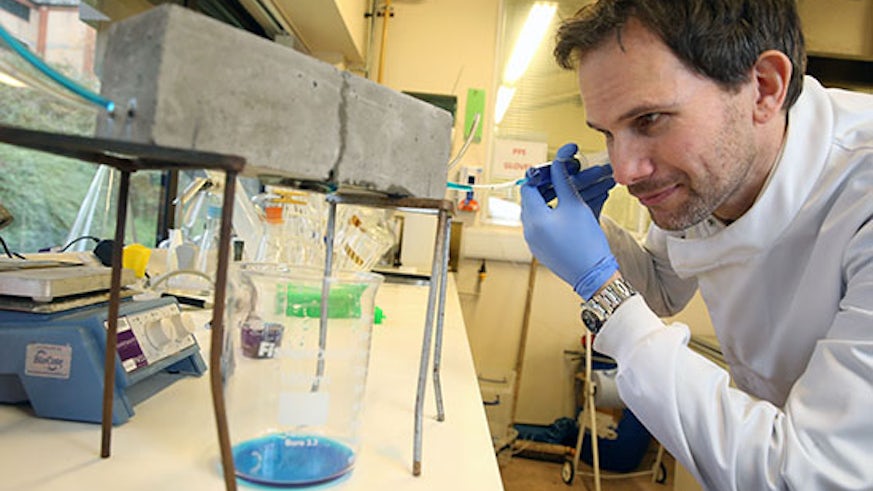Materials for Life project begins field trials
1 September 2015

The Materials for Life (M4L) project at the School of Engineering has commenced trialling concrete which has been specially constructed to contain self- healing material which can help prevent deterioration in concrete structures such as highways and bridges.
The project, funded by the Engineering & Physical Sciences Research Council (EPSRC), is led by Cardiff University and includes Cambridge and Bath Universities, as well as a number of industrial companies and organisations.
Self-healing concrete uses a combination of shape memory polymers, microcapsules and microbial healing to reduce or slow down the effects of deterioration due to ageing or damage. Costain, one of the industrial partners involved in the project, have reported the commencement of trials in the publication “Construction News”.
Costain is building a trial structure at the Heads of the Valleys highway project in South Wales to allow the research team to see how the new material performs in a real environment outside the laboratory.
Construction News cites Costain civil engineer Oliver Teall, who is on secondment to the School of Engineering where he is completing a PhD, and quotes him as saying: “We’ll be building a full-scale wall structure with a number of concrete panels. Into each panel we will incorporate different combinations of self-healing techniques. These will be loaded to artificially damage them, and then monitored to see how they react and recover over time.
“We plan to start testing at the end of September, running for a minimum of six months. From this trial we should gain an insight into the feasibility of constructing a full-scale structure with these techniques and their early-stage effects on structural properties.
“We’ll be looking at the effect of the healing techniques on areas such as stiffness, permeability and the mechanical damage recovery of the trial panels.”
The M4L project team are looking forward to analysing the results of the trials so that they can plan the next steps in this exciting project which could revolutionise concrete construction by cutting costs and making structures safer and more durable.